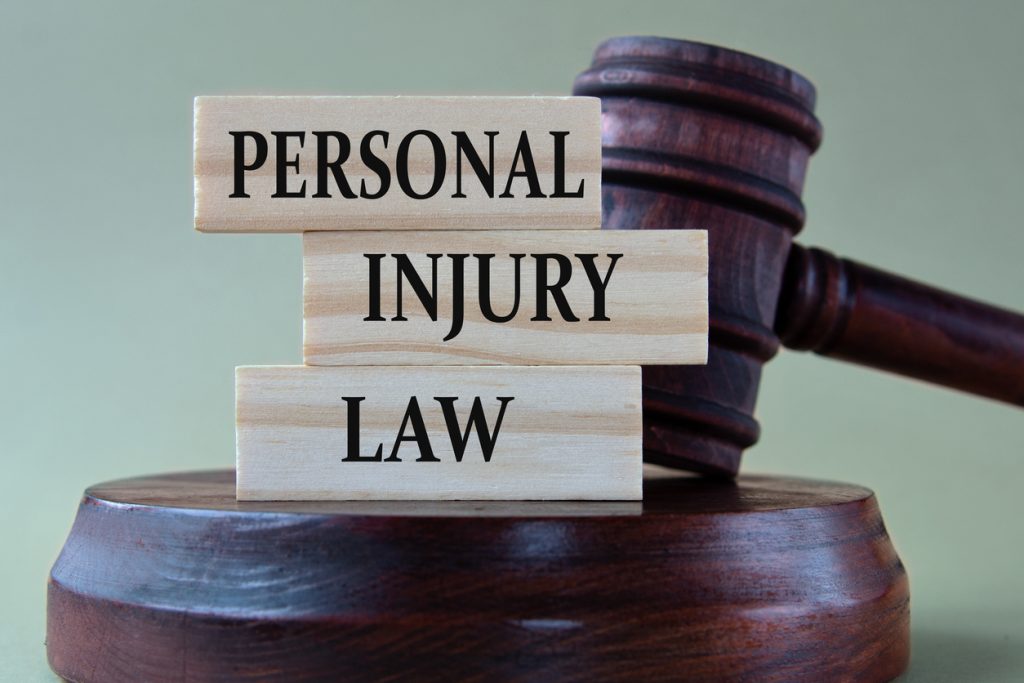California's comparative fault statute plays a crucial role in personal injury cases. This law allows the court to assign a percentage of fault to each party involved, which directly affects the compensation a plaintiff can recover. Understanding this statute is essential for anyone navigating the complexities of personal injury claims in California.
Under the comparative fault principle, a plaintiff's compensation can be reduced based on their share of liability for the incident. For example, if someone is found to be 20% at fault for their injuries, their recovery will be diminished by that same percentage. This aspect emphasizes the importance of gathering clear evidence and utilizing effective legal representation to accurately assess fault.
Navigating personal injury cases in California requires a solid grasp of how comparative fault works. Knowledge of this statute not only impacts potential settlements but also shapes strategies for those seeking justice and compensation for their injuries.
Overview of California Comparative Fault
California's comparative fault system plays a significant role in personal injury claims. It determines how damages are allocated based on the degree of fault among the parties involved in an accident or injury.
Legal Framework of Comparative Fault
The California Comparative Fault Statute is found in Civil Code Section 1714. This law establishes how liability is assessed in personal injury cases. Under this framework, both the plaintiff and defendant can share fault for an incident. This means that if an injured party is found partially responsible for their injuries, their damage award may be reduced by their percentage of fault.
Principles of Comparative Negligence
Comparative negligence refers to the legal principle of assigning fault in personal injury cases. California utilizes a pure comparative negligence standard. This means each party's degree of negligence is assessed, and damages are reduced accordingly. For instance, if a plaintiff is found 30% at fault in an accident, they can recover 70% of the total damages awarded. This approach encourages fair compensation while holding individuals accountable for their actions.
California Pure Comparative Negligence Rule
Under the pure comparative negligence rule, plaintiffs can still recover damages even if they are primarily at fault. This is a defining element of California law, distinguishing it from other states with modified comparative negligence rules. If a plaintiff is 99% responsible for an accident, they may still collect 1% of the damages. This framework emphasizes that all parties have some degree of accountability in a personal injury case, ensuring that injured individuals receive compensation, no matter their level of responsibility.
Understanding Fault in Personal Injury Cases
In personal injury cases, establishing fault is crucial. It directly impacts liability and the potential for compensation. The concepts of fault vary in complexity and are often analyzed through specific criteria.
Determination of Fault
Determining fault involves an assessment of actions and decisions by all parties involved. In California, the comparative fault rule applies. This means fault can be divided among multiple parties based on their contributions to the incident.
To assess fault, investigators examine evidence, witness testimonies, and police reports. Key factors include:
- Negligence: Was there a failure to act with reasonable care?
- Intent: Did someone intend to cause harm?
The percentage of fault assigned to each party affects the compensation they may receive.
Types of Fault
Fault is categorized mainly into two types: comparative fault and contributory fault.
- Comparative Fault: This system allows injured parties to recover damages even if they are partially at fault. For example, if an individual is 20% responsible for an accident, they can still pursue 80% of the damages.
- Contributory Fault: In some jurisdictions, this strict approach bars recovery if the injured party holds any percentage of fault, limiting their ability to seek compensation.
Understanding these types is essential, as they shape the legal strategy and potential outcomes in personal injury claims.
The Process of a Personal Injury Claim
The process of a personal injury claim involves several crucial steps. Each stage plays a significant role in determining the outcome of the case. Understanding these steps helps in navigating the legal landscape effectively.
Filing a Claim
The first step in a personal injury claim is filing a formal complaint. This complaint outlines the injured party's case, including the specifics of the injury, the incident, and the responsible party. The injured person, or plaintiff, must file this complaint in the appropriate court.
Once filed, the defendant receives a copy of the complaint. They are typically given a specific time frame, often 30 days, to respond. This initial phase is critical, as it sets the foundation for all subsequent legal actions in the case.
Evidence and Investigation
Evidence gathering is a vital component of a personal injury case. Both parties will collect documents, witness statements, photographs, and other relevant materials. This evidence helps to establish the facts and supports the claims made in the complaint.
The injured party often gathers medical records, police reports, and any documentation related to lost wages. The defense may also conduct their investigation, often employing adjusters or investigators to challenge the plaintiff’s account.
Effective evidence collection can significantly influence the outcome of the case, making attention to detail essential.
Litigation and Negotiation
Litigation may follow if the parties do not reach a settlement during negotiations. In this phase, each side presents its case in court. This process involves presenting evidence, witness testimonies, and legal arguments before a judge or jury.
Negotiation typically occurs concurrently, often through mediation or settlement discussions. Both sides seek an agreement to avoid the uncertainties of a trial.
The goal is to find a resolution that compensates the injured party for damages suffered. This includes medical expenses, lost wages, and pain and suffering. In California, comparative fault laws will also come into play, affecting how damages are awarded based on the level of fault attributed to each party involved.
Impact of Comparative Fault on Damage Recovery
The principle of comparative fault significantly influences how damages are calculated and awarded in personal injury cases. Understanding how an individual's percentage of fault affects compensation is crucial for both claimants and defendants.
Calculating Damages
In California, damages in personal injury cases are calculated by determining the total economic and non-economic losses incurred by the injured party. Economic losses include medical expenses, lost wages, and property damage. Non-economic losses cover pain and suffering, emotional distress, and loss of enjoyment of life.
Once the total damages are assessed, the injured party's degree of fault is determined. For instance, if an injured party is found to be 20% at fault for the accident, their recoverable damages will be reduced by that percentage. This means if the total damages are $100,000, they can only recover $80,000.
How Fault Affects Compensation
The apportioning of fault directly correlates to the financial compensation available. California employs a "pure comparative fault" system. This means that an injured party may still recover damages even if they are found to be primarily at fault.
For example, if a plaintiff is 70% responsible for an accident, they can still recover 30% of the awarded damages. This law ensures that even those with significant fault can seek some recompense. Thus, the proportion of fault can considerably impact the amount of compensation received, making it essential to accurately establish liability and fault percentages in personal injury claims.
Statutory Exceptions and Limitations
Certain exceptions and limitations apply to California's comparative fault statute. These nuances can affect the filing and outcomes of personal injury claims, particularly regarding liability and deadlines.
Exceptions to Comparative Fault
California recognizes specific exceptions under its comparative fault laws. One significant exception involves intentional torts, where a plaintiff's fault does not reduce recovery. In cases involving punitive damages, plaintiffs can pursue full recovery against a defendant found guilty of intentional misconduct.
Another exception is associated with specific statutory protections. For example, certain immunity statutes protect public entities and employees from liability under particular circumstances. These exceptions alter the comparative fault analysis, making it crucial for claimants to assess their situation carefully.
Time Limits for Filing a Claim
The Statute of Limitations in California dictates the time frame for filing personal injury claims. Generally, plaintiffs have two years from the date of the injury to file a claim in court.
There are exceptions that can extend this period. If the injured party is a minor, they may have until their 18th birthday to initiate a claim. Additionally, if the injury isn't discovered right away, the statute may allow a discovery rule, extending the filing period after the injury becomes known.
Understanding these timelines is essential to ensure the viability of a personal injury claim in California.
Role of Attorneys in Comparative Fault Cases
Attorneys play a critical role in navigating the complexities of comparative fault in personal injury cases. Their expertise can greatly influence the outcome of a case by effectively managing liability assessment and legal strategy.
Choosing the Right Attorney
Selecting an attorney experienced in personal injury law is essential for success. Potential clients should look for credentials and relevant experience in comparative fault cases.
Factors to consider include:
- Track Record: A history of successful settlements or verdicts.
- Specialization: Familiarity with California’s comparative fault statute.
- Client Reviews: Positive feedback can indicate reliability and competence.
An attorney who understands the intricacies of comparative fault can help clients evaluate their position accurately. They should foster open communication, ensuring clients understand their rights and potential outcomes.
Attorney's Function in Settlement and Trial
The attorney’s responsibilities encompass both settlement negotiations and trial preparation. In settlement discussions, they assess the strengths and weaknesses of the case, providing clients with realistic expectations.
Key tasks include:
- Fact Gathering: Collecting evidence to substantiate claims or defenses.
- Negotiation: Engaging with opposing parties to reach a favorable settlement, factoring in shared fault.
If a case proceeds to trial, the attorney must present the evidence compellingly. This includes examining witnesses, demonstrating liability, and establishing the relative fault of all parties involved. A well-prepared attorney enhances the chances of a favorable verdict, ensuring clients receive fair compensation.
Case Law Analysis
California's comparative fault statute has been shaped significantly by case law. Notable decisions illuminate how courts interpret liability and the implications for personal injury claims. The evolving landscape reflects shifts in legal understanding and application.
Significant Comparative Fault Cases
One landmark case is Li v. Yellow Cab Co. (1975), which established the doctrine of pure comparative negligence in California. In this case, the court ruled that a plaintiff could recover damages based on their percentage of fault. This ruling allows for more equitable outcomes as it recognizes the shared responsibility in accidents.
Another important case is Barker v. Lull Engineering Co. (1978). Here, the court addressed the issue of fault allocation and clarified that juries can apportion fault among multiple parties. This case reinforced the principle that the total responsibility for an accident does not rest solely on one individual or entity.
Recent Legal Developments
Recent decisions continue to refine the application of comparative fault. In Scotland v. LVMH Moët Hennessy Louis Vuitton Inc. (2020), the court examined the nuances in assessing fault in complex negligence claims. The ruling emphasized that juries should consider any potential contributions of the plaintiff to the incident.
Another relevant case, Murray v. Barlow (2022), focused on product liability and comparative fault. The decision clarified that manufacturers could share liability if the plaintiff's misuse of the product contributed to the injury. This reflects an ongoing trend where courts strive to account for all factors influencing the outcome of personal injury cases.
Jury Instructions on Comparative Fault
Jury instructions are essential in guiding jurors on how to evaluate comparative fault in personal injury cases. These instructions clarify the law and determine how fault is assigned among the parties involved.
Standard Jury Directions
Standard jury directions for comparative fault in California provide clear guidelines for jurors. They emphasize that jurors must assess the percentage of fault attributable to each party involved in the incident.
Jurors will generally receive instructions that include:
- Definition of Comparative Fault: A clear explanation of how the law applies.
- Apportionment of Fault: Jurors must decide whether the plaintiff, defendant, or any third parties share responsibility.
- Impact on Damages: A reminder that total damages are reduced based on the plaintiff's percentage of fault.
These directions aim to help jurors arrive at a fair and balanced verdict by assigning fault accurately.
Interpreting Jury Instructions
Interpreting jury instructions on comparative fault requires careful consideration. Jurors must understand that their duty is to apply the law as instructed and to weigh the evidence presented.
Key points for jurors include:
- Clarity in Language: Complex legal terminology should be simplified for better understanding.
- Consideration of Evidence: They must evaluate the credibility of witnesses and the reliability of evidence before determining fault.
- Legal Standards: Jurors must adhere to California’s law on comparative fault, recognizing that the plaintiff's recovery is limited by their level of responsibility in the incident.
This process helps ensure that the assignment of fault reflects the nuances of the case and the behavior of all parties involved.
Comparative Fault in Insurance Adjustments
Understanding how comparative fault affects insurance adjustments is crucial for those involved in personal injury cases. The allocation of fault can significantly influence negotiations and the compensation awarded.
Negotiating with Insurance Companies
When negotiating with insurance companies, the determination of fault plays a pivotal role. Each party’s percentage of fault impacts the final settlement offered. For instance, if an injured party is found to be 20% at fault, their compensation may be reduced by that percentage.
Insurance adjusters often leverage comparative fault to minimize payouts. They may argue for a higher percentage of fault assigned to the injured party, affecting the amount received. Documentation and evidence that support a low fault percentage are essential.
Effective negotiation strategies include clearly presenting evidence that supports the injured party's case. This can involve gathering witness statements, medical records, and accident reports.
Insurance Policy Considerations
Insurance policies might have specific clauses addressing comparative fault. These clauses outline how fault percentages affect claims and payouts. It is essential for policyholders to understand these parameters.
Typically, policies are structured to comply with state laws regarding comparative fault. In California, for example, insurance companies must adjust claims based on the shared responsibility model.
Claimants should review their policy's terms regarding liability coverage and fault attribution. Knowing the implications of these terms can help inform their negotiation strategies and expectations during claims processing.
Comparative Fault and Settlements
In California, settlements in personal injury cases often hinge on the principles of comparative fault. Understanding negotiation strategies and the roles of mediation and arbitration is essential for reaching a fair settlement.
Negotiation Strategies
Negotiation is a critical component in personal injury settlements. When multiple parties are involved, determining each party's fault can influence settlement amounts.
Key Strategies Include:
- Establishing Fault: Clear documentation of the incident and its circumstances can strengthen one party's negotiating position.
- Calculating Damages: Accurate assessment of medical bills, lost wages, and pain and suffering creates a solid basis for demands.
- Willingness to Compromise: Being open to negotiation can facilitate settlements that are more acceptable to all parties.
Employing these strategies effectively may lead to a swifter resolution of the case, benefiting everyone involved.
Mediation and Arbitration Role
Mediation and arbitration are alternative dispute resolution methods that can simplify the settlement process. They play significant roles in personal injury cases, especially in comparative fault situations.
Mediation:
- Involves a neutral third party who facilitates discussions.
- Allows both sides to express their views and seek common ground.
- Often results in a mutually agreed-upon settlement, avoiding a lengthy trial.
Arbitration:
- A more formal process where an arbitrator makes a binding decision.
- Can be a quicker and more cost-effective approach than litigation.
- Parties present evidence, and the arbitrator's ruling is typically final.
Both methods focus on reaching settlements while minimizing time and costs associated with traditional court proceedings.
Preparation for Trial
Effective trial preparation is crucial in personal injury cases involving California's comparative fault statute. This involves gathering evidence and organizing how the case will be presented to the court.
Evidentiary Considerations
Gathering evidence is the first step in preparing for trial. This includes collecting documentation such as:
- Medical records
- Accident reports
- Witness statements
Each piece of evidence must be relevant and admissible under California law. It is essential to analyze how the comparative fault statute applies to the case. Evidence demonstrating the injured party's percentage of fault can significantly impact the final judgment.
Additionally, anticipating potential counterarguments from the opposing party is vital. Understanding what evidence they might present allows for strategic planning.
Presenting the Case in Court
Presenting the case clearly and convincingly is key to influencing the jury. Attorneys should outline a logical structure for the case, illustrating the sequence of events.
Visual aids, such as diagrams and timelines, can aid comprehension. Using concise and compelling narratives can help keep the jury engaged.
Witnesses play an essential role; their testimonies should align with the presented evidence. Effective cross-examination of opposing witnesses can also enhance credibility.
In personal injury trials, clarity and organization throughout the presentation can significantly affect outcomes.





















